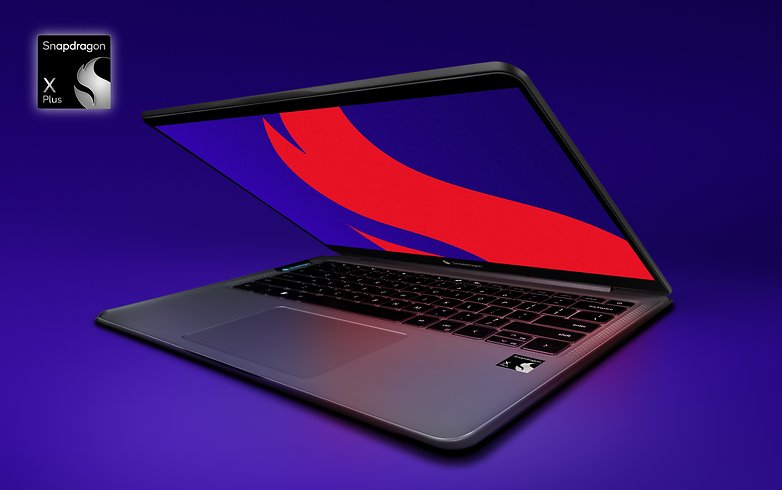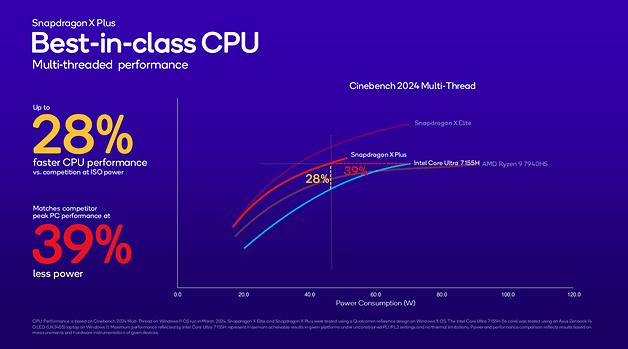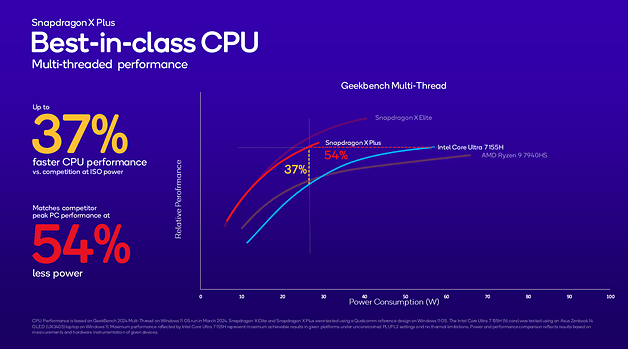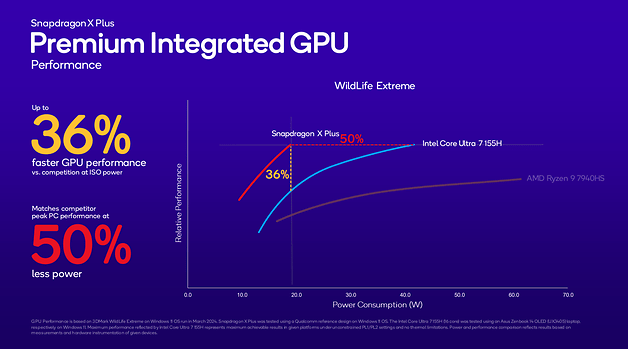It seems like an eternity since Qualcomm announced its new high-performance ARM cores for the PC market. Six months later, the North American company not only confirmed the model names for its Snapdragon X Elite chips but also a more accessible version of the chip, the Snapdragon X Plus.
Both new chips are based on the same custom Oryon ARM CPU core, based on the technology acquired when Qualcomm purchased the Nuvia startup. The Plus chip, however, features fewer cores of each processing block. Since the Elite chip was announced way back in October, the Snapdragon duo will now face the Apple M3 generation in the table below instead of the then-current M2 chips.
| Snapdragon X Elite | Snapdragon X Plus | Apple M3 Max | Apple M3 | |
|---|---|---|---|---|
| Performance core |
|
| ||
| Efficiency core | ||||
| RAM |
|
|
|
|
| GPU |
|
|
|
|
| Cellular modem |
|
| ||
| Connectivity |
|
| ||
| Process node |
Bold claims
When it comes to overall performance, Qualcomm made some bold claims back in October when comparing the Snapdragon X Elite to the AMD and Intel chips available back then. Now, the Snapdragon’s sights were also pointed at the Apple M3 chip, with the company promising 10% faster multithreaded performance when comparing the Snapdragon X Plus, with the Elite chip taking the advantage to 28% on Geekbench’s test.
Pitted against Intel’s latest Meteor Lake and AMD’s Zen4 cores, the Snapdragon X Plus is touted as both faster and more power-efficient than its x86 rivals, both in CPU and integrated GPU benchmarks.
And like every other product launch in 2024, the AI capabilities of the Snapdragon X Plus NPU were heavily advertised by Qualcomm, which claims it is the “world’s fastest NPU for laptops”.
Although highly theoretical, the claim is still pretty much believable since both AMD and Intel are still taking their first steps into the NPU arena, while Qualcomm (and Apple, Google, MediaTek…) were already investing heavily in AI for the mobile space.

Plus or Elite?
Compared to the previously announced Snapdragon X Elite, the Plus variant looks like a typical binned chip, deactivating defective CPU and/or GPU cores as they leave the (busy) TSMC N4 production lines.
The practice has been used for many years already by not only AMD and Intel but also Apple. Apple offers its M3 Pro and M3 Max chips with different numbers of CPU and GPU cores depending on how much money you can invest.
| CPU cores | Max dual-core boost clock | GPU | |
|---|---|---|---|
| X1E-84-100 |
| ||
| X1E-80-100 |
| ||
| X1E-78-100 |
| ||
| X1P-64-100 |
|
For the Snapdragon X Plus, the result is two fewer Oryon CPU cores, which are clocked a little more conservatively, with possibly the same fate for the Adreno GPU cores—unfortunately, Qualcomm stopped disclosing their GPU configurations many years ago.
Outside those main cores, the rest of the specs are identical, with the same 42 MB of total cache memory, 45 TOPS AI core, LPDDR5X support, camera processing resolution, connectivity, and even other interfaces, such as USB4, and M.2 support.

According to Qualcomm, the first PCs powered by the Snapdragon X Plus chip should be coming to the market by mid-2024, the same (vague) time frame announced for the X Elite processor.
While we wait for testing devices, share your expectations in the comments below. Do you think Qualcomm will finally deliver the promise of Windows on ARM chips, or we will still have compatibility or performance issues due to legacy applications?



